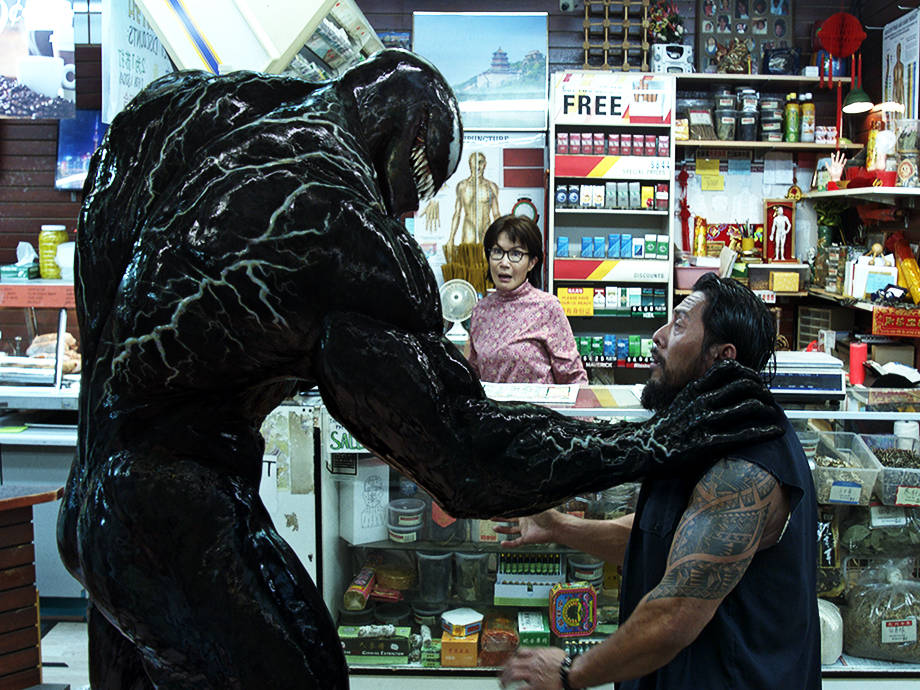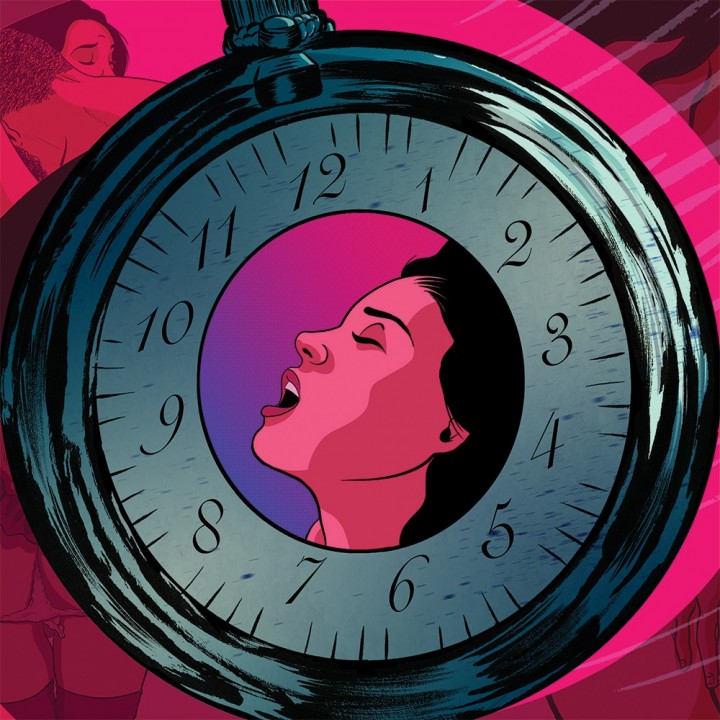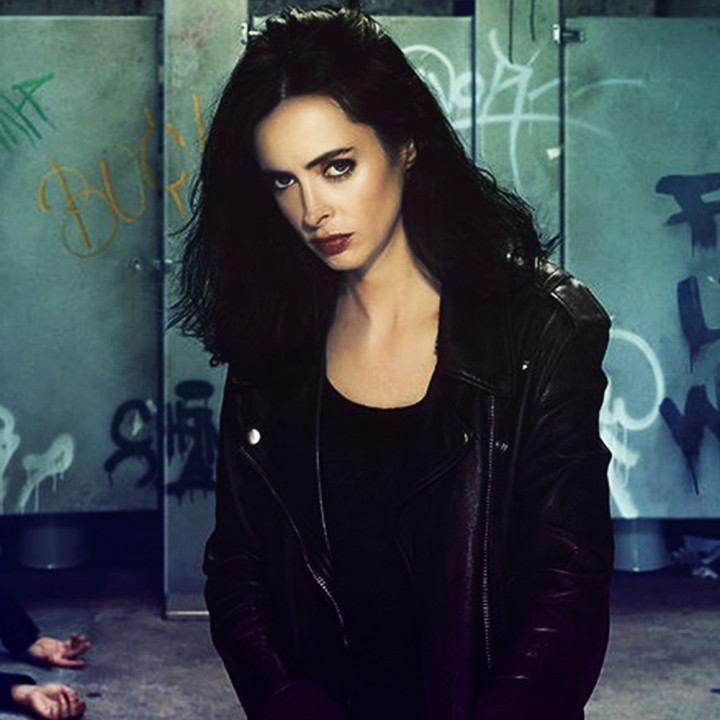
How 'Halloween' Perfects the Sequel That's 40 Years in the Making
Director David Gordon Green tells Playboy why Jamie Lee Curtis had no problem letting go of the past
The premise was simple, and the budget was small. Back in 1978, a little, indie horror film about a masked madman stalking babysitters went into production with a shoestring budget of $325,000, and it filmed in the Los Angeles area for a total of 20 days. That movie was called Halloween, and it screamed its way into theaters on October 25, 1978.
The Playboy Interview: John Krasinski
America's favorite office drone on how he outlived his defining role and ended up directing himself

But 1981’s Halloween II was barely the beginning of what would be a 40-year string of sequels and reboots, some good, others—well, not so great. The long-thriving franchise has had a total of 11 films produced to date, with an increasingly confusing canonical timeline. After 1995’s not-so-well-received Halloween 6: The Curse of Michael Myers, the series was rebooted with 1998’s Halloween: H20—the first sequel to not only see the return of Jamie Lee Curtis as Laurie Strode for the first time since the two initial films, but the first sequel to ignore events from select previous sequels. In H20’s case, everything after Halloween II (1981) was ignored. What followed H20 was the critically bashed eighth entry of the series, 2002’s Halloween: Resurrection, which seemingly killed off Laurie, thus ending Curtis’ involvement for good. Rob Zombie would reboot the series again with his own dark and gritty vision—the first being a remake, 2007’s Halloween and its sequel, Halloween II (2009).
Now, the 40th anniversary is upon us, and the slate is going to be wiped clean … again, this time with an unexpected and surprising director at the helm, David Gordon Green (Pineapple Express), who is best known for comedies. To make things more interesting, Green’s co-producer and writing partner on the project is funny man Danny McBride. The two decided to make a sequel that ignores everything after Halloween, even the fan-favorite sequel Halloween II (1981). And surprise, surprise, Curtis is also back, but with a new twist on the role—she’s no longer the sister of Michael Myers. Playboy recently chatted with Green about what it was like writing and directing his first horror movie, why the mysterious Michael Myers is best left unexplained and why he and McBride chose to wipe the slate clean.
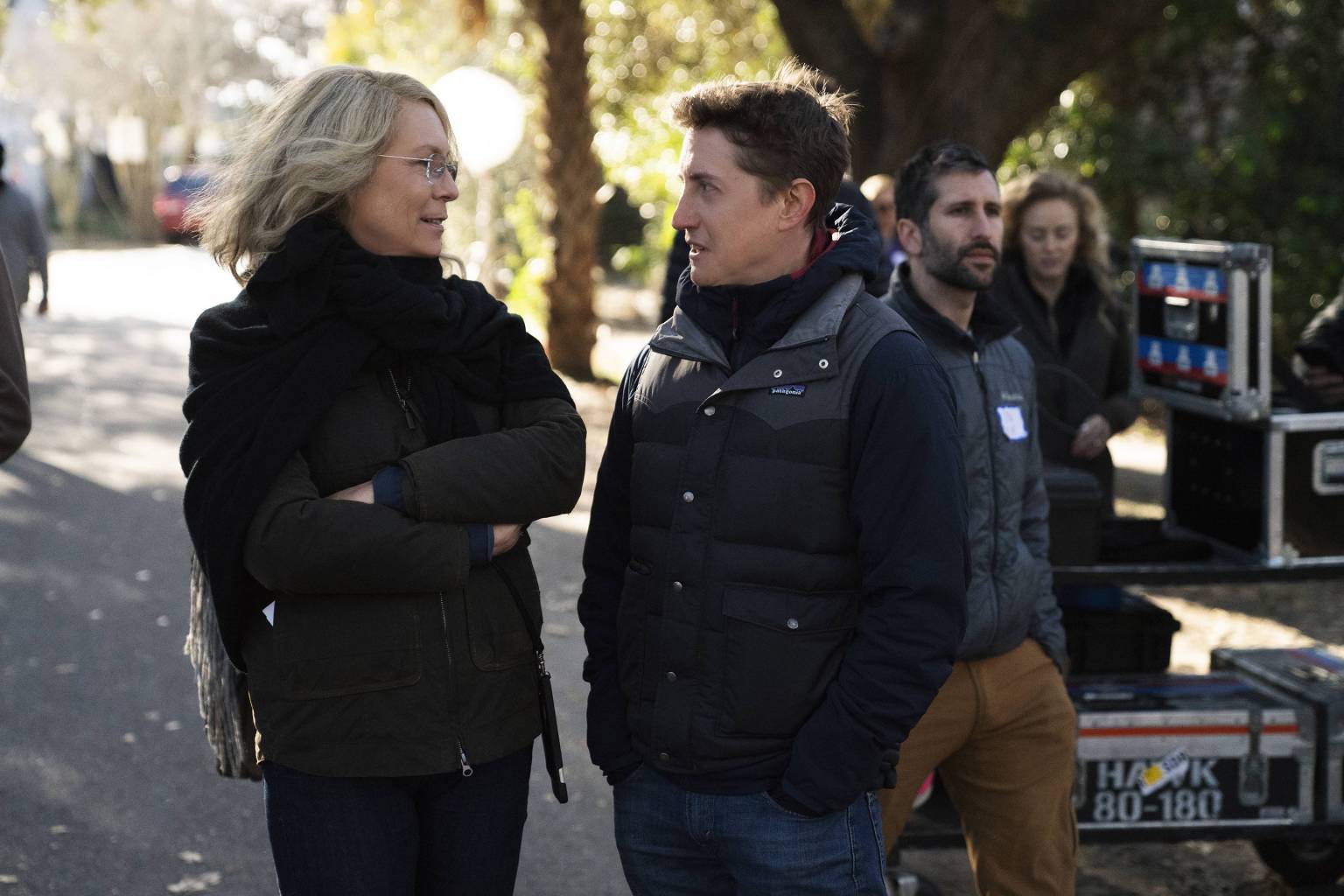
I feel really good. I’m very encouraged by the reaction. When I make a comedy, I can kind of feel it in the room when it’s working and it’s connecting with the audience, and I feel that with this horror film. This is my first horror movie, so I was really nervous about how that artistic approach is connecting and communicating. From the screenings that we’ve had that I’ve attended, it’s been really gratifying.
The boldest move you made with this movie is that you chose to ignore the events from all of the sequels, including Halloween II, which many consider to be the best sequel of the series. That resulted in Laurie Strode no longer being the sister of Michael Myers. Was that always the plan from the get-go, or was there ever an early version of script that took place after Halloween II?
In the beginning, we were including Halloween II, at least in our initial concepts. Then, it was actually Danny McBride, one of my cowriters on the movie, who was like, “You know what, it’s bogging us down.” The revelation in that film is that they were siblings, and it was taking away from Michael’s lack of motivation. So, one of the things that’s really scary about the 1978 film that we were trying to employ was that randomness of his violence. You and I could be next, right? The second that he’s just after his bloodline, or has some sort of inspiration from a cult or whatever other motivations the franchise explored, it became less scary to me, personally. So, Danny brought up the concept of cleaning the slate, going from the original and taking it from there.
How did Jamie Lee Curtis first react to the idea that Michael was no longer going to be Laurie Strode’s brother? Surely, she had a huge opinion on that matter since it’s a character she’s played in several movies since 1978.
She was on board with the idea right away. She locked in and understood why we were doing what we were doing. We didn’t have to do a lot of hard selling on it. She’s got great energy and enthusiasm, and said, “I believe in what you guys are trying to do with it, and I want to play.”
Michael no longer being Laurie’s brother might be the toughest pill to swallow for some fans because it changes a 40-year legacy. For 40 years, we’ve associated the two as siblings—now suddenly, they’re not. Are you nervous about any negative reactions from the fans?
I’m not nervous about any of it. I’m excited about it. For me, I made the Halloween film that I wanted to see, and I think people will see why we made the choices that we made, and they’ll understand that when they see how the film plays out. People have a nostalgia and a sentiment for films of their youth, as do I—I love Halloween II. I love a lot of the films and a lot of the elements of the franchise that we’re not utilizing, but hopefully, we’re not disrespecting them either. We’re not acknowledging them in our mythology, but there are a lot of little Easter eggs. For example, Halloween II—we have a kid with a boom box walking down the street on Halloween, and it’s kind of a little acknowledgment to that extra with the cowboy hat in Halloween II. Hopefully, the deep-rooted fans that have a significant nostalgia for the franchise will see the playfulness that we have and not any sort of disrespect.
Jamie Lee Curtis has great energy and enthusiasm, and said, “I believe in what you guys are trying to do with it, and I want to play.”
You know, I dismissed the third one, and I’ve since revisited it and like it a lot more. So, I would say things have evolved. The fourth one is a lot of fun. Even Rob Zombie’s approach, how to dig into Michael’s psyche or backstory—I had fun watching those films. It’s just when someone asks, “What would you do?” I would do things a little differently, you know?
I think I spotted some nods or some of those Easter eggs you mentioned. For example, the scene where Michael gets his pair of coveralls. It seems to mirror that scene in Halloween 4, where Loomis tracks Michael down to a gas station and finds a dead mechanic. Coincidental or intentional?
It’s intentional. You know, some things are subconscious. We studied all of the films while we were writing. We’d be writing, and the films would be on in the background. Jeff Fradley, our cowriter, has a whole wall in his living room that’s a movie screen, so we’d be watching the films while we were all sitting there with our laptops, throwing ideas to each other. It’s the trick of Michael, right? You got to get his mask back on, you got to get his coveralls. He’s got to get back into his uniform.
Are there any crazy ideas you and Danny came up with that never made it into the screenplay? Or maybe they did, but they ended up on the cutting-room floor?
Oh, my God. So many. I don’t know how crazy this is, but we had a prologue that basically picked up at the end up the 1978 Halloween. It illustrated Michael’s apprehension. Basically, he disappears at the end of the movie, and he was going to be caught. So, we had rebuilt the bedroom to the square inch—the closet over here, the balcony over there, and we were going to reshoot that ending, a stylized version of it. He falls over, he gets apprehended. We built the room, and we hadn’t dressed it—it was just the frame, and then while talking to John Carpenter, he says, “Trust your audience—you don’t need it.” This was a 25-day shoot, not a lot of money. In my mind, I was like, “Let’s see if we need it later. If we need it, we’ll go back and refinish it later.” So we have this room just sitting there. Then we started to think, wouldn’t it be cool if this room mirrored our room at the end of the film? What if our climax mirrored that climax? So we ended up using that set. It’s an exact match to the bedroom in the original film. I don’t know if anyone will put that together, but it’s kind of fun.
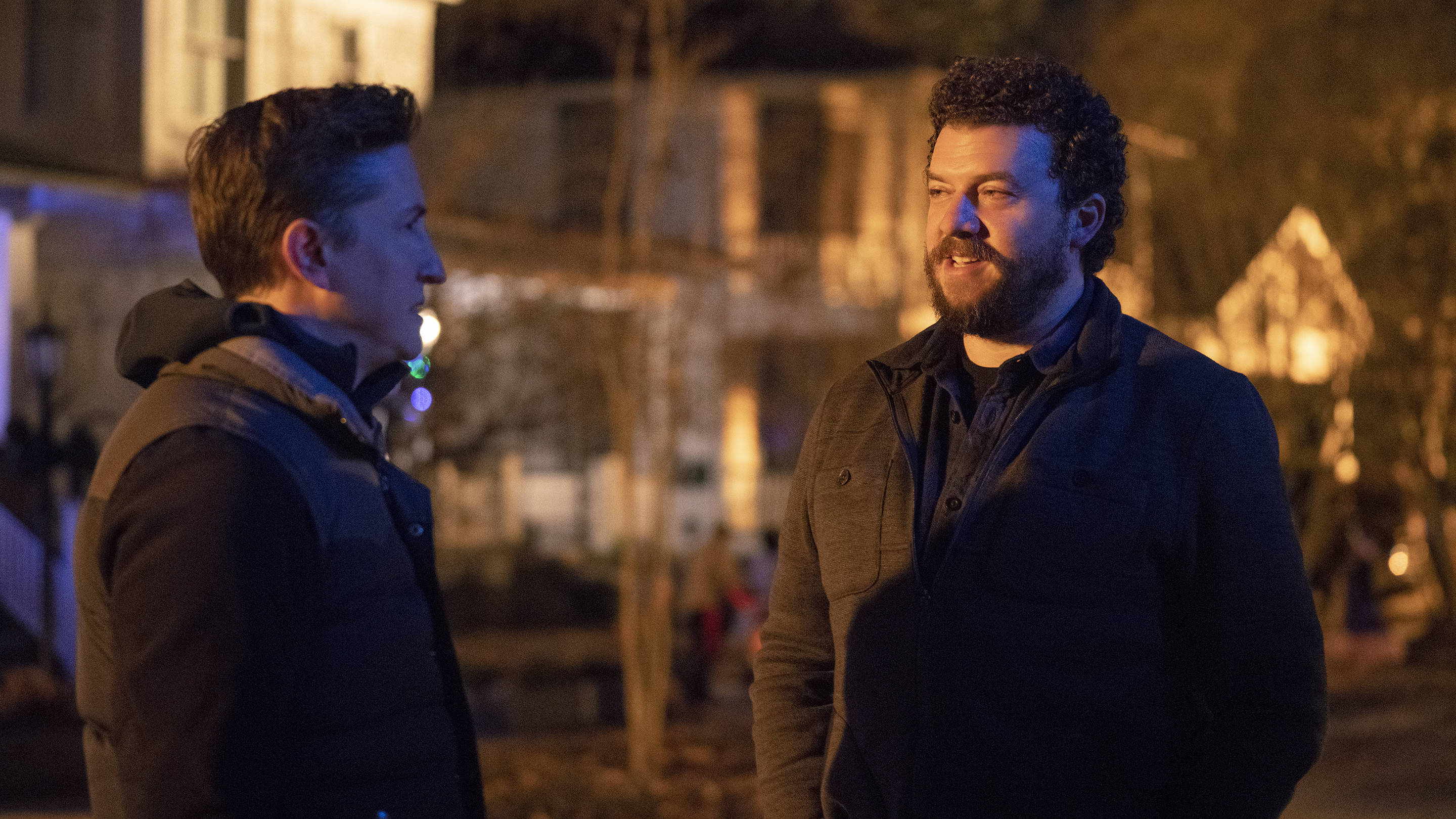
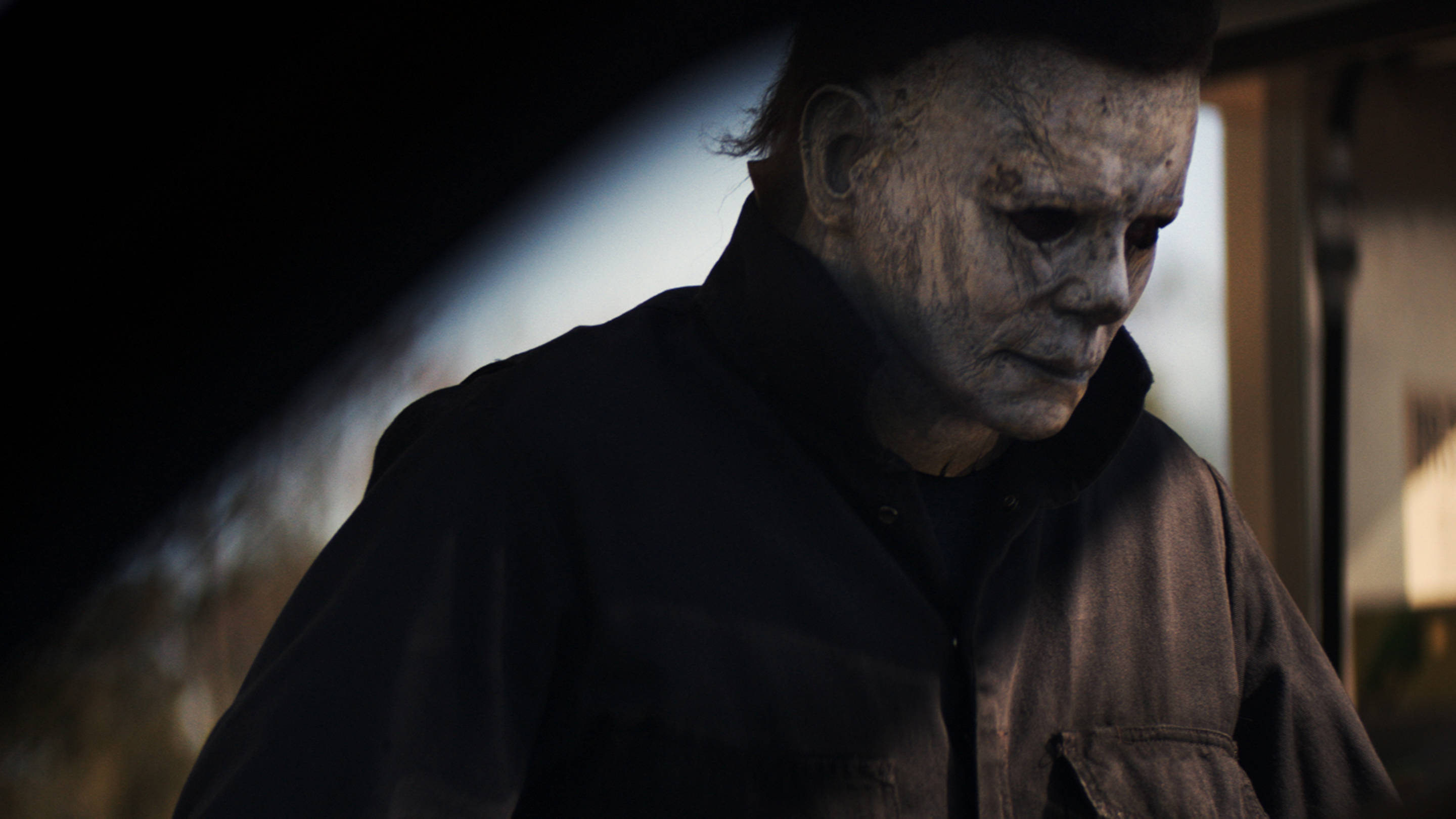
There’s so many. [Laughs] No, they weren’t. We had some ideas of what we’d do with Ben Tramer, and if there had been a connection there. So we played with some ideas there. That was kind of fun. We did so many drafts and explorations of things. [Laughs] There was one consideration where we went off the rails with Dr. Loomis for a little bit, and had this other drawn-out narrative about what had happened to him. [Laughs]
Paul Rudd played Tommy Doyle in Halloween 6, and you have a relationship with him since he starred in your 2013 film, Prince Avalanche. If you got Jamie Lee Curtis to come back and reinvent the Laurie Strode role, maybe you could’ve talked Paul into coming back to play Tommy Doyle again.
[Laughs] Don’t think we haven’t thought about that. [Laughs] Yeah, there’s so many fun things like that that are cool. I remember when it was first announced that I was doing this new Halloween, I got an email from Paul Rudd. It said: “Don’t dismiss the cult.” [Laughs]
Comedy is your forte. Was it difficult writing your first horror project, which is very light in the humor department?
We made it a point to not write anything funny. We were like everyone else—suspect of two comedically known writers making something that was supposed to be scary, so we made it a point to say, “OK, this is all business.” Us, above anyone, can’t put funny stuff in the movie. And then when we were shooting, funny stuff just kept happening. So there’s all these funny things that weren’t in the script, but they were happening during the production, so they found their way into the movie. Because when we were editing, they felt like great ways to make empathy for characters and have tension-breakers and things like that. Like, the kid that Vicky is babysitting, young Julian—it's this kid saying funny stuff, so we invited it into the movie. And I had no idea what a goldmine actor Toby Huss was going to be as Ray.
You guys did a great job replicating the feel of the original movie. Even the opening credits match the first film. You got Carpenter involved as producer and composer—did you ever consider getting [cinematographer] Dean Cundey back?
I was pretty specific about using [cinematographer] Michael Simmonds. It was a low-budget movie. We shot it in Charleston, S.C. We wrapped season two of this HBO series, Vice Principals, and then used that crew and moved everybody right into Halloween. It was a smooth-running show, great crew, so it was fun to keep everybody going from this comedic HBO series to a horror movie. But Michael Simmonds did speak to Dean Cundey, and they had creative conversations, so it was cool that they connected. I’d be very interested to see what he thinks at the end of the day.
What was it like collaborating with John Carpenter during the scoring process?
Oh, it was amazing. I let him do his own thing, of course, but then I’d go into the studio and give ideas and go through music with him, and they would talk me through why music here is important, or why no music here is important. Or here, wouldn’t it be great if we added a little atmosphere or a pulse. I learned a lot from watching him, but at the same time, I wanted to make sure he has a creative space to play and do what he wants to do and do what he’s proud of doing, and I learned from him.
I want to applaud you for getting the mask right. So many of the sequels went with new designs that never quite looked like the original. Even Halloween H20 has several masks within the same movie because it kept changing during production.
It’s the weirdest thing. As a matter of fact, Jamie gave me a photo from H20 of eight mask designers standing up with their masks for a presentation. And you just see this weird evolution of all these guys trying to do the mask—so I don’t think it’s for lack of trying. Apparently, and I don’t know anything about mask making, it’s really hard to make something out of that material—that’s that malleable, that’s that specific—look like that. To me, when you watch the original, there’s a melancholy to that mask. It's not a monster mask, and it's not a nothing mask. It’s kind of got a minimal expression—there’s almost a sad-clown quality to it. Christopher Nelson, who did our special effects, design and prosthetics is an amazingly talented guy. So we worked for a long time on it, and he did a great job. I actually have the cast of the original mask. His first goal was to replicate the original 1978 mask. Once we made that, [it] then went on to, how do we distress it or deteriorate it, or how do we make it feel like it’s the old-man version of it. It’s 40 years later—you want it to be a little bit aged.
I also like that you didn’t try to explain Michael Myers too much. You left him mysterious. Halloween 6 brought in the whole Cult of Thorn storyline that involved druids and runes. Rob Zombie’s two movies went with the abusive childhood route to explain why he is the way he is. In your mind, is Michael just a mortal man, or do you think there’s an evil, supernatural element to him—or is it just best to leave him unexplained?
That’s the best. To me, the second you start explaining it is when you get into trouble. If you just think, This is a pretty spectacular essence of evil that’s personified and does a lot of human stuff that you and I might not be able to sit up in a 90-degree angle after [laughs], but it’s subjective, right? Everybody has their own thing like, “That’s superhuman,” or “That’s totally impossible.” We always try to ride that line of like, Ehhhh, it’s pretty difficult, but not totally impossible. He hasn’t defied gravity quite yet. I think that’s the fun place that I like, and if we justify too much of where he comes from or why he does what he does, it humanizes him in a way. By seeing him without his mask for the first 20 minutes of the movie, it’s tricky because you don’t want it to be a gimmick that you’re avoiding his eyes. The second you would see his eyes, you would empathize with him. You’d think, “Here’s a human being.” So in the edits, we just avoided seeing him, and I think it works well to not feel the human connection you kind of have with a lot of villainous characters.
Not counting Rob Zombie’s remake and its sequel, but with Halloween parts 1-8, with the exception of director Rick Rosenthal (Halloween II, Halloween: Resurrection), it was always a new director with each sequel. Do you see yourself coming back if a sequel is greenlit, or would you rather step back and let new blood take the helm?
Maybe I’ll see what Rick’s up to. [Laughs] It’s kind of premature. There’s certainly talk. I’ll see how this lands. I’ve always been one to shake it up and surprise even myself with my next moves. Like, I just wrapped a TV series about poet Emily Dickinson. Traditionally, those are the shocking moves I like to make. However, you give me an iconic character who was a big part of my childhood and cinematic diet, and you give me a creative arena with all my friends and a great, supportive entity like Blumhouse and Universal behind it, you get this tremendous machine to motivate. So it’s not like me making my little indie movie that I’m keeping my fingers crossed that it makes it into Sundance. It feels like there’s real muscle behind something I’m actually creatively passionate about. And that’s a really rare find for me, so we’ll see.
This is your first horror film. Do you see yourself returning to the genre, even if it’s a film that’s not a Halloween sequel?
I do love the genre, and it’s fun working with it. It was a little unnerving during production because I was never scared. You write something, and you’re setting up the shots, and you know what’s happening, so it’s not scary. If you’re making a comedy, you bust up laughing during a take. Or if you’re making a drama, you feel tears falling from you eye, you feel really emotionally connected. So horror is different in that way. You don’t have that immediacy. In the moment, you try to light things cool. You hope that sound effects and John Carpenter’s score and other collaborators come in, or a great editor steps in and does what needs to be done to help make it scarier. That being said, it’s a fun, abstract, creative place to play. I have a great appreciation for the genre. Dark stories are always something I’m drawn to, and dramatic work as well.
Did you have John Carpenter contribute in any way while he would visit the set? Maybe he secretly directed a scene?
He was on-set. It was fun. It was cool to be able to introduce him to my father because while growing up, I loved going to see movies like Starman or Big Trouble in Little China with my dad. So it was fun to be able to introduce them and watch them talk about comic books. It was inspiring for the crew, too. Everybody knows that we’re walking into some pretty substantial footprints, so let’s honor, embrace and collaborate with him. It was awesome.
When 'Venom' Star Tom Hardy Wants to Jump Into a Lobster Tank, Let Him
Director Ruben Fleischer tells Playboy why viewers should approach the film with an open mind
